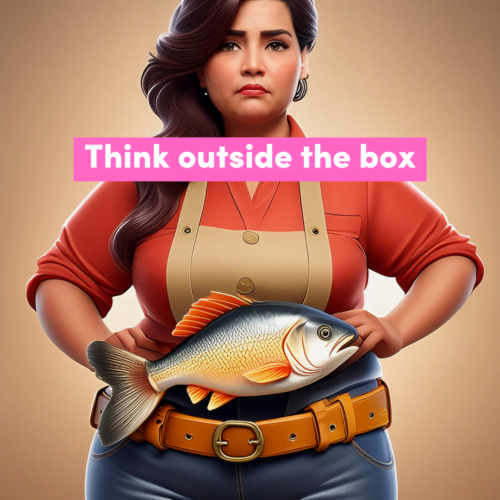Dear Aunt Vadge,
My girlfriend claims that she cannot get a vaginal orgasm and has only experienced clitoral orgasms up to this point. I love her and want to make her feel amazing in every way that I can.
What can I try?
Thank you,
Improver
Age 24, California, USA
_____
Dear Improver,
You have asked a sticky question that doesn’t have a quick or easy answer. Settle in, and I’ll give it my best shot.
Every woman has slightly unique anatomy. When we’re built in the womb, we’re stitched together from cells, and this cell-stitching is not uniform amongst all humans – we are short, tall, have big ears and wobbly toes. We have freckles and hair in weird places. When it comes to the shape and size of the vulva and vagina, and internal organs, the same applies.
Perhaps her cervix tilts, or her urethra is closer to her vaginal canal, or her pelvic nerve clusters are rearranged in a particular way, or her visible clitoris is very sensitive due to more nerve endings in it, or because it protrudes more or less than others.
All of these tiny differences in our bodies mean what sex feels like varies. What gets one person off may not do a thing for another. Because we can’t see what we’re doing, the differences are often not taken into account, and we think doing the same thing to each person will work sexually. This is not the case.
Female ejaculation is one such variance – some can squirt very easily and it happens without any input from them besides sexual activity (and that can be in lieu of an actual orgasm – ejaculation and orgasm are actually separate functions).
It is generally thought that this ability to squirt, or not to squirt, is largely down to anatomy. We should all, in theory, be able to do it, but not everyone finds it as easy as the women you see squirting like crazy in porn – they are squirters. It’s just not like that for most women. You can follow the instructions to a T, and still have no luck. Some people are squirters, others just aren’t.
This is the same sort of idea with orgasms. Apparently there are 26 different types of female orgasm, not just ‘clitoral’ or ‘vaginal’. An orgasm is an orgasm, and they often feel quite different to one another, each and every time.
The discussion of the vaginal and clitoral orgasms is fraught with a complete lack of evidence for any differences in orgasms. Even when researchers put cameras inside the vagina to see what the vaginal orgasm looks like, they can’t see what the person describes or can only see it some of the time.
Thus, the discussion of different types of female orgasm is largely subjective, at least for now. That is, a person can only report sensations during orgasm, and classify it personally. There is no definitive way to know what orgasms are what type.
If your girlfriend has never had a vaginal orgasm, she has nothing to compare her clitoral orgasms to, and won’t know what to look for and seek out during sex. So here’s a few ideas.
The clitoris is actually enormous
MRIs of the clitoris have discovered that the clitoral structure is actually huge, and is more like the Starship Enterprise than the little button on the outside. (Go to our clitoris and orgasm article, and watch the video in its entirety.)
The clitoris has these little legs that get erect, and actually wrap around the vaginal canal. This is the likely source of vaginal orgasms – the stimulation of the other clitoral structures from inside the vaginal canal.
The cervix is orgasmic
The cervix – right up at the top of the vagina – is actually an orgasmic structure in many women. Well, like the squirting, technically in all women, but not everyone feels it the same due to the angle of the cervix and uterus.
You know how some women love it from behind, but some women don’t? This is often because the angle and depth of the penis gets closer to a cervix on a certain tilt, and also pushes more firmly on the so-called g-spot.
The g-spot is probably part of our enormous clitorises and pelvic nerve clusters
So the infamous, undiscovered g-spot. The g-spot has never, ever been found as a singular item. The best they’ve found is that it is a broad area on the top wall of the vaginal canal. It has been studied a lot, but no doctor, researcher, scientist, layperson, nobody, has ever found a particular area that is better than others.
Women report all kinds of different sensations – or no sensations – when this ‘magical’ area is stimulated. It makes a lot of women feel like they need to pee, and it can feel quite unpleasant. To other women, when the internal structures of the clitoris are erect, it can feel amazing.
When you’re poking around trying to find the g-spot, think about how big the clitoris is, and what you are actually trying to do. Which is to stimulate all areas of the clitoral structures from the inside. This is something you and your girlfriend will need to do together, super slow, and as a sort of sexual science project rather than a super sexy session.
Check the diagrams in Vag Basics and the clitoris article for help with anatomy.
The journey to discovering our hot spots can take a long time
Many women take a while to learn how to masturbate (compared to boys), and a lot haven’t spent long hours investigating their mostly-invisible vaginas and vulvas. This means her knowledge of her sexual anatomy may still be happening.
Taking the time to really investigate, taste, smell and caress your girlfriend’s body and vagina will go a long way to expanding both of your understandings of her sexual response, and bring you one step closer to making her come like she has never come before.
The key to mindblowing female orgasms is getting her erect from the inside out, and how that occurs is going to be up to you both to discover.
Working as if you are in a perpetual sexual experiment is the only real way to learn what gets each other off, including things we never knew we liked.
Find weird stuff on the internet and try it on each other. Rate it out of 10. Give it a review. Talk about how it feels, what was good about it, and what was weird about it. Become each other’s student.
Timing is everything
The key is to get her really turned on so that her orgasms are big, so picking the time of her cycle that you experiment can make the difference between a successful experiment and a bit of a dud. Understanding when sex-enhancing hormones are in abundance in your girlfriend’s blood means you can make the most of her cycle highs and lows.
The men who understand women’s cycles have a better time with women, since once you get it, it’s pretty predictable. The reason women can seem so changeable and mysterious to men is often because we change over the course of a cycle in sometimes minor, sometimes major ways, but almost always in the same ways. We have predictable patterns. Learn them.
If it ain’t broke…
Importantly, don’t try to force your girlfriend to have an orgasm in a different way than she likes – this is you putting pressure on her to do something you want her to do.
If she doesn’t want to, why try to fix something that ain’t broke? Let her orgasm however she likes!
Good luck!
Aunt Vadge
References1–4
- 1.Kontula O, Miettinen A. Determinants of female sexual orgasms. Socioaffective Neuroscience & Psychology. Published online January 2016:31624. doi:10.3402/snp.v6.31624
- 2.Shaeer O, Skakke D, Giraldi A, Shaeer E, Shaeer K. Female Orgasm and Overall Sexual Function and Habits: A Descriptive Study of a Cohort of U.S. Women. The Journal of Sexual Medicine. Published online March 19, 2020:1133-1143. doi:10.1016/j.jsxm.2020.01.029
- 3.Wallen K, Lloyd EA. Female sexual arousal: Genital anatomy and orgasm in intercourse. Hormones and Behavior. Published online May 2011:780-792. doi:10.1016/j.yhbeh.2010.12.004
- 4.Herbenick D, Fu TC (Jane), Arter J, Sanders SA, Dodge B. Women’s Experiences With Genital Touching, Sexual Pleasure, and Orgasm: Results From a U.S. Probability Sample of Women Ages 18 to 94. Journal of Sex & Marital Therapy. Published online August 9, 2017:201-212. doi:10.1080/0092623x.2017.1346530
Get a fresh perspective with a qualified, experienced vulvovaginal specialist naturopath.
This product has multiple variants. The options may be chosen on the product pageThe most comprehensive vaginal microbiome test you can take at home, brought to you by world-leading vaginal microbiome scientists at Juno Bio.
Easy-to-use BV and AV treatment program.
Promote and support a protective vaginal microbiome with tailored probiotic species.





